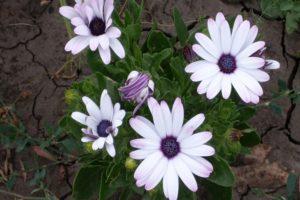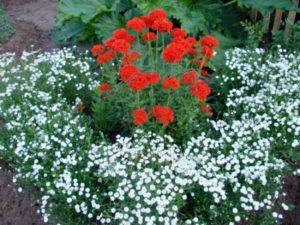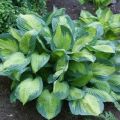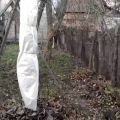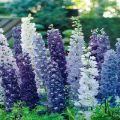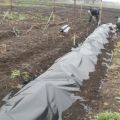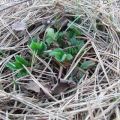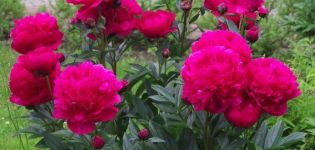How to prepare your hosta for winter in the fall, proper care and pruning time
The hosta flower is often used to decorate the garden and is an element of landscape design. The plant is perennial, so it is important to know how to properly prepare hosts for winter.
Description and features
In order for the flower to continue its development with the onset of spring, preparations for the cold should begin in the fall. The standard preparation process is to follow the rules of agricultural technology and the use of covering material. It is also important to choose the right period for the preparatory activities.
Regional features and timing
The timing of preparing hosts for wintering directly depends on the surrounding climatic conditions. When preparing, you need to take into account the peculiarities of the growing region.
Middle lane
In conditions of flower growth in the middle zone, including the Moscow region, shelter for the winter is a prerequisite. To protect the plant, it will be enough to cover the root area with a layer of mulch, which is used as bark, compost or peat mixed with grass. Optimal preparation time: end of September - early October.
Volga region
In the Volga region, a flower can tolerate frost without much cover. When growing a plant in this area, it is enough to sprinkle spruce branches or snow. During a frosty winter, you can mulch the root area with a dense layer of peat mixed with sawdust. Covering work can be carried out in early October.
Ural and Siberia
The climate of the Urals and Siberia is characterized by frosty winters and extremely low temperatures. Hosta retains the ability to continue development if it hibernates under dense mulch. The period for sheltering the plant in the Urals and Siberia is the whole of September.

South of Russia
Plants grown in the southern regions of the country need minimal shelter. You can start preparing for the winter period at the end of October - the first half of November.
Leningrad region
The Leningrad Region is characterized by mild and warm winters, so you don't need to cover your host with special materials. Sufficient protection is provided by mulching the root area. It is necessary to equip the mulch layer during the second half of October.
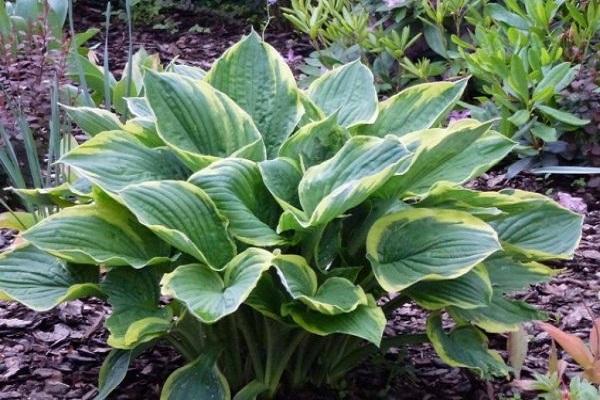
How to prepare for wintering
The process of preparing hosts for cold snaps can be divided into several stages. Correct implementation of all stages is the key to a favorable wintering of the plant.
Removing buds that have faded
They begin to take care of the host by removing old buds. Flowering begins towards the end of August, and during the fall, some of the buds fade. To preserve plant nutrition for the winter, you need to remove unnecessary elements in advance. To perform the procedure, you should prepare a pruner or garden shears, which will allow you to carefully cut the buds.
Abundant watering
Khosta is a moisture-loving plant, so proper care must be taken to maintain vigorous growth. In autumn, you need to moisten the soil abundantly to a depth of 0.5 m, trying not to get on the leaves. As the ambient temperature decreases, water consumption and irrigation frequency decrease.
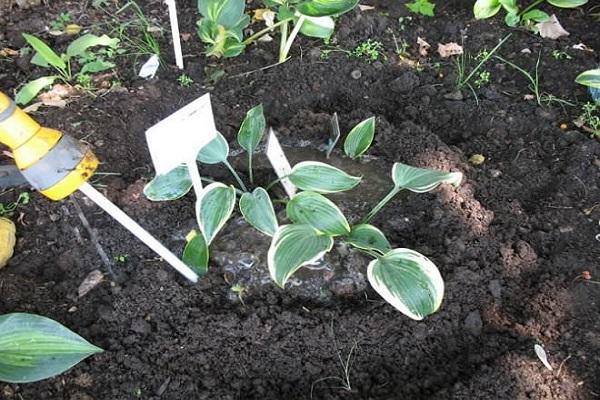
Top dressing
The first portion of fertilizers after planting and adaptation to new conditions is applied at the beginning of the summer period, which contributes to the growth of foliage. In preparation for winter, you need to feed the plant in early autumn or at the end of August. To keep the hosta in good condition, it is recommended to use formulations containing potassium and phosphorus. These components are absorbed by the roots and provide nutrition during subsequent flowering.
Mulching
Having a layer of mulch helps keep the plant warm. The hosts spread organic mass on the root area, which are suitable for:
- peat;
- sawdust;
- dry grass.
Starting to prepare mulch, you should treat it with insecticidal preparations that provide protection from pests. The accumulation of parasites in organic matter can lead to plant damage and the development of infections.

Autumn pruning
Pruning the plant in anticipation of winter is part of the preparatory process. Pruning is needed to remove excess foliage, where pests that eat the plant live.
Do I need
Pruning hosts is a prerequisite for preparation. If foliage is left on the plant, it will eventually turn into a slimy mass and attract parasites.
Timing
Pruning begins when yellow leaves fall. By this time, nutrition with mineral components goes to the lower part of the plant. It is allowed to combine the formation of hosts with protective processing.

How to trim correctly
Excess leaves on the host must be carefully cut off with scissors or pruners. It is not recommended to pick the foliage with your hands, as you can accidentally damage the plant.
Protection from pests and diseases
To prevent the host from being infected by diseases and harmful insects, protective treatment is required. Spraying with fungicidal agents is carried out against diseases, and insecticides are used to repel parasites.
Shelter
Organic mulch is used as the main cover, and special material provides additional protection. It is better to cover the host in warm, windless weather, when the soil is in a dry state. First, the plant must be mulched, and then covered with material on top. Stones are placed along the perimeter on top of the shelter to fix the material and close access for rodents.
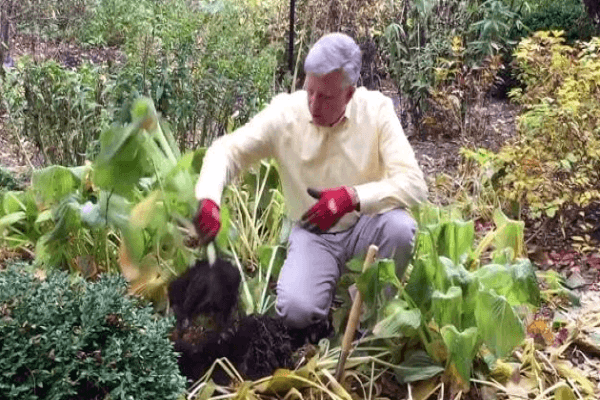
Typical mistakes
Inexperienced gardeners often make mistakes when preparing hosts for frost. To correctly complete the process, you should familiarize yourself with common violations.
Nitrogen fertilizing
The introduction of nitrogen fertilizers before the onset of the winter period leads to the active growth of the flower. An intensive set of leaf mass causes the outflow of nutrients needed by the plant during the winter.
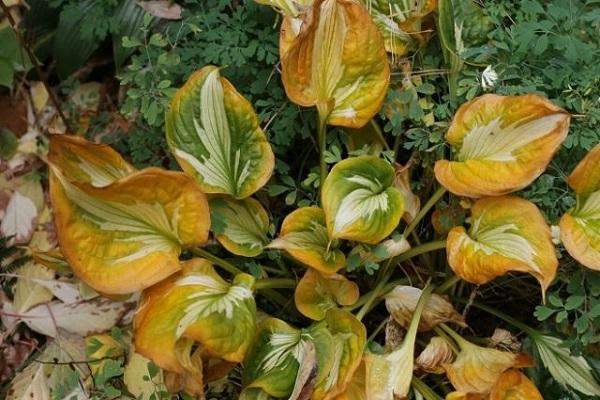
No mulching
The lower part of the foliage on the host dries up during the fall and forms a natural protective layer.Many gardeners believe that this layer will be enough to protect the plant, but in severe frosts, the roots do not have enough extra warmth.
Using special materials for shelter
You cannot use plastic wrap and roofing material for shelter, since condensation forms under them, and moisture will provoke rotting and the appearance of fungus. The most suitable materials for sheltering hosts are:
- sackcloth;
- agrofiber;
- spunbond.
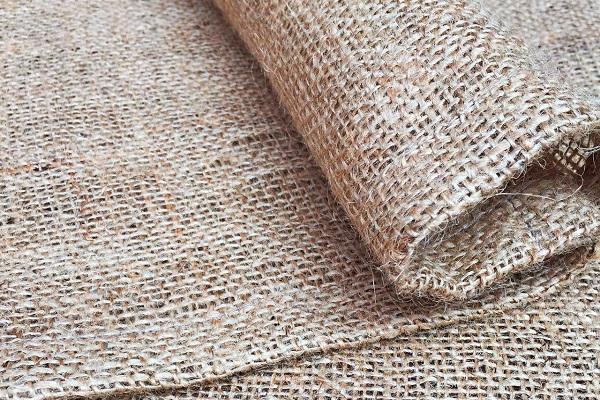
Overdrying of soil
Even in winter, the roots of the plant need moisture. The dry soil does not provide the flower with the necessary nutrition, and the quality of the roots deteriorates.
Transfer
Transferring a flower to a new place weakens the protective functions, since it takes time to adapt to changed conditions.
It is recommended to transplant the host no later than August.
the greenhouse effect
The greenhouse effect is caused by the use of unsuitable protective material. Believing that greenhouse conditions will keep the plant warm, growers disrupt the hosta's natural growth process and it begins to rot. In some cases, the decay process is not immediately noticeable, since it starts from the roots.
When it rises after winter
When growing hostas in open ground, the flower rises at a later date. Plants wait until stable heat is established and only then resume active growth and development.

Live mulch option
Experienced gardeners are aware of the possibilities of using live mulch. This term refers to cover crops or green manure. Most often rye, oats, mustard, calendula and phacelia are grown for this purpose. The main requirement is the selection of an actively growing species and mowing of the green mass before flowering. The cut plants are crushed and left on the root area or embedded in the surface layer of the soil.
Useful Tips
The main rules in preparing for winter are to observe basic care and control the flowering of hosts. During the winter period, the plant is favorably affected by the throwing of snow - it is shoveled and a hill is built next to the bushes for additional protection. After the snow melts, you need to remove the old mulch in order to reduce the risk of damage by pests that winter in organic matter.
